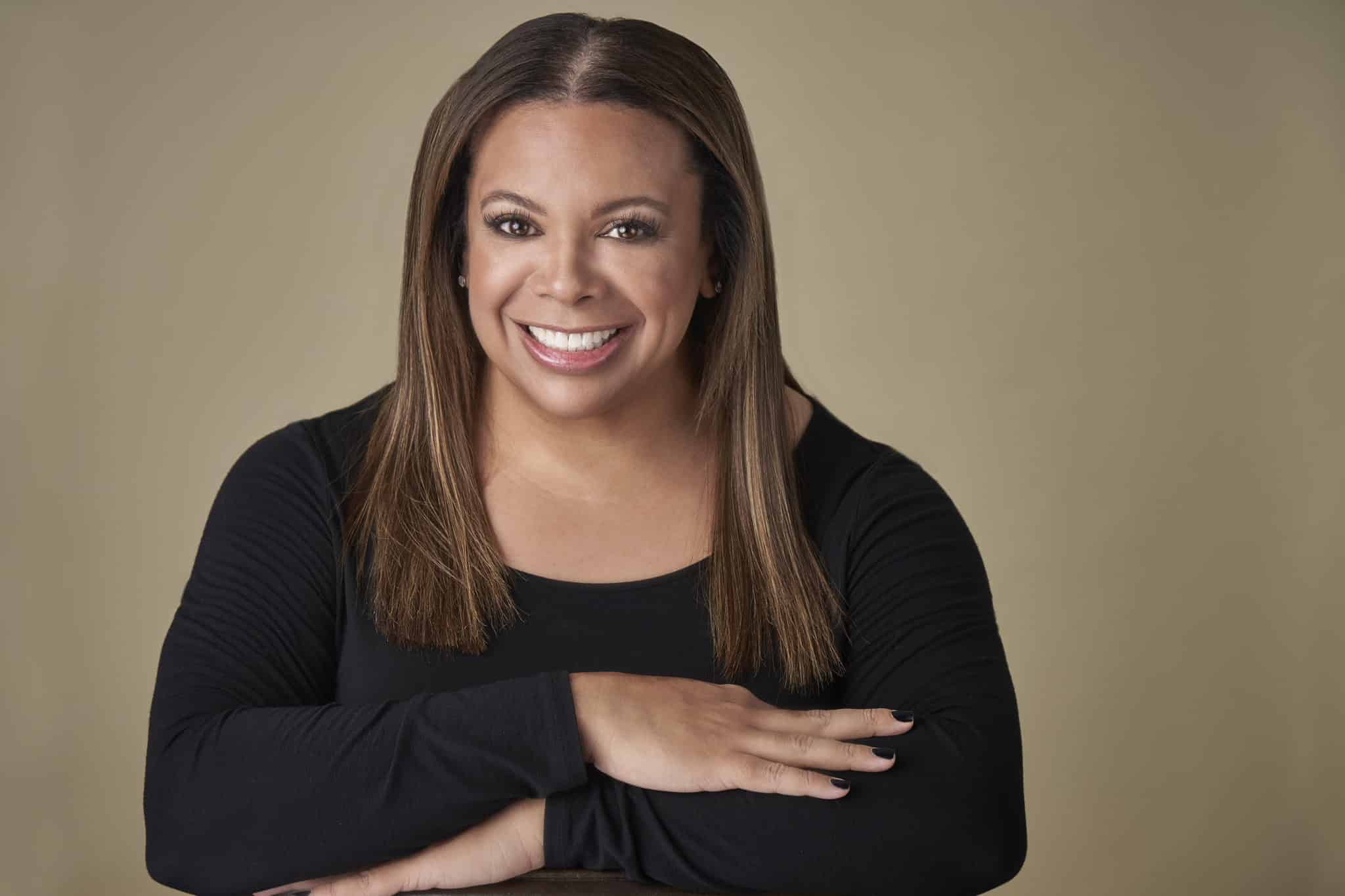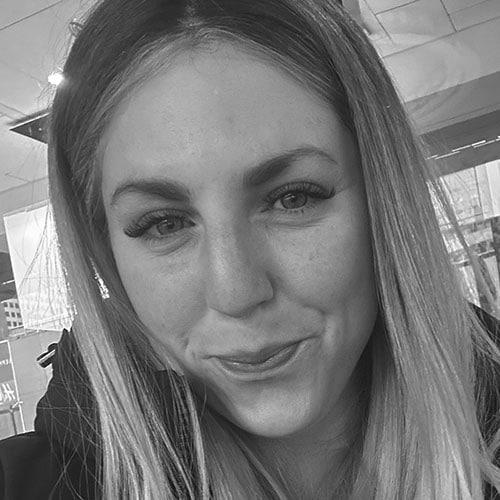 Marra B. Gad. Photo by Bobby Quillard
Marra B. Gad. Photo by Bobby Quillard
At a time when race and identity are at the forefront of Americans’ minds, author and independent film and television producer Marra B. Gad has released her debut memoir, “The Color of Love: A Story of a Mixed-Race Jewish Girl.”
Gad, whose biological mother was white and Jewish and biological father was black, writes about growing up with her adoptive Ashkenazi, white Jewish family in Chicago. The book details her struggles along with coming to terms with a racist great aunt suffering from Alzheimer’s.
The Journal spoke with Gad about her memoir and how Jews can be allies with the black community.
Jewish Journal: Why did you decide to write your book?
Marra B. Gad: Being biracial and Jewish has meant a very challenging path for me in a world that believes, unfortunately to this day, that Jews are white and black people are either Muslim or Christian. I’ve wanted to talk about it for a very long time. It wasn’t a conversation that society or the Jewish community was having. When I noticed a few years ago that we were starting to acknowledge people like me, I decided it was time to speak.
JJ: Were you adopted through a Jewish agency?
MBG: Back in 1969 when all of this began, adoption was not handled as widely by agencies as it is now. A rabbi in New York handled mine. My biological mother’s rabbi made it a mission to make sure he found a Jewish home for her baby. My entire [adoptive] family is as Ashkenazi, as you can imagine. My [adoptive] parents found out they were infertile. My cousin had adopted through this rabbi and said to my parents, “He’ll find you a baby.”
My biological mother knew her lover had been black but she didn’t tell the rabbi I’d come out brown. The notion of someone taking a biracial child in the late ’60s was not high. On my adoptive father’s birthday, they got the call that I was born. If that’s not bashert, I don’t know what is. The lawyer [handling the adoption] saw me in the crib after I was born and his face drained of color. The rabbi told my adoptive parents there was a mistake and they didn’t have to take me if they didn’t want to. They said, “It’s not a mistake. That’s our baby.”
The first piece of being an ally is to not be silent. On a personal level, you can check in with black and brown friends. Say, ‘I’m here for you, what do you need?’ In what ways you can, speak, whether marching is your thing or donating or calling legislators or using social media. But speak and let it be known that you agree with the voices in streets saying, ‘No more.’
JJ: What was it like growing up black and Jewish in the Jewish community?
MBG: Nowadays, there is a great deal more diversity in the Jewish community, but growing up, the only nonwhite face I ever saw in Jewish places was mine. I grew up very involved in my Reform synagogue. I’ve been to Israel 9 million times. I did Hebrew school. I knew people were talking about me behind my back. Nobody would dance with me on the bar and bat mitzvah circuit because no one wanted to dance with the girl with the afro. There was a rumor that a black man had raped my mother and they decided to keep the baby. People would say things from the time I was a young child on. Not everyone was like that, though. My rabbi, Herman Schaalman, was remarkable. He escaped Nazi Germany. When people had something to say about me, he’d say, “She’s my child. If you have an issue, you come to me.” I consider myself truly blessed that he was my rabbi growing up.
JJ: Do you think things have become better over the years for black Jews?
MBG: There is more diversity and we are acknowledging it. That is better. I want to say 26 to 27 places from the Jewish Book Council wanted to invite me to talk about my book. But is my experience in the world any different or better? The only difference is people will say stuff to my face instead of behind my back all the time. On Rosh Hashanah last year, I dared to go to synagogue for services. After the Pittsburgh massacre, I made a choice to go to the most liberal synagogue in Los Angeles and from the minute I arrived, the guard and usher practically strip-searched me. I was viewed as a threat because of what happened in Pittsburgh. I said, “The shooter was a white man. How did you come to [see me as a threat]?” There was silence. Nobody wanted to give me the actual answer that they felt threatened because I was not white.
JJ: How do you think the Jewish community can go about treating people equally?
MBG: It goes beyond treating [people] equally. You have to acknowledge racism is a problem and that we participate in it. You can’t fix a problem that you don’t know exists. I think it happens on the individual and structural level. As individuals, we have to be willing to look at our own behavior and say, “Where do I fit on this spectrum?”
For organizations, there has to be an honest, open commitment that if you’re coming into our spaces, everyone gets treated the same way. And if not, we’ll be accountable for it. The accountability part is hard. You can teach your greeters all the guidelines you want but if their bias kicks in and they don’t want to give me a siddur when I walk in and you’re the rabbi, call me and apologize. Let’s work together to make sure that doesn’t happen again.
JJ: What do you think of the protests happening now?
MBG: The difference between what happened in the ’60s and now is you didn’t see everyone from different races, religions, ages and socioeconomic backgrounds coming together en masse in the streets like this. The broad swath of humanity, not just in America, has taken to the streets day after day to say no, this is not acceptable to murder black men in the streets, and we must have equal justice for all. It gives me hope that this time things will be different.
JJ: How can the Jewish community be allies with the black community?
MBG: The first piece of being an ally is to not be silent. On a personal level, you can check in with black and brown friends. Say, “I’m here for you, what do you need?” In what ways you can, speak, whether marching is your thing or donating or calling legislators or using social media. But speak and let it be known that you agree with the voices in streets saying, “No more.” Know this is a marathon and not a sprint. This has been going on for decades and decades and it’s only now [coming to the surface] because we’re seeing it on film. You cannot look at videos of people getting gunned down and strangled in the streets and think it’s not happening anymore. We’re all in this together. We must do the work together.























 More news and opinions than at a Shabbat dinner, right in your inbox.
More news and opinions than at a Shabbat dinner, right in your inbox.